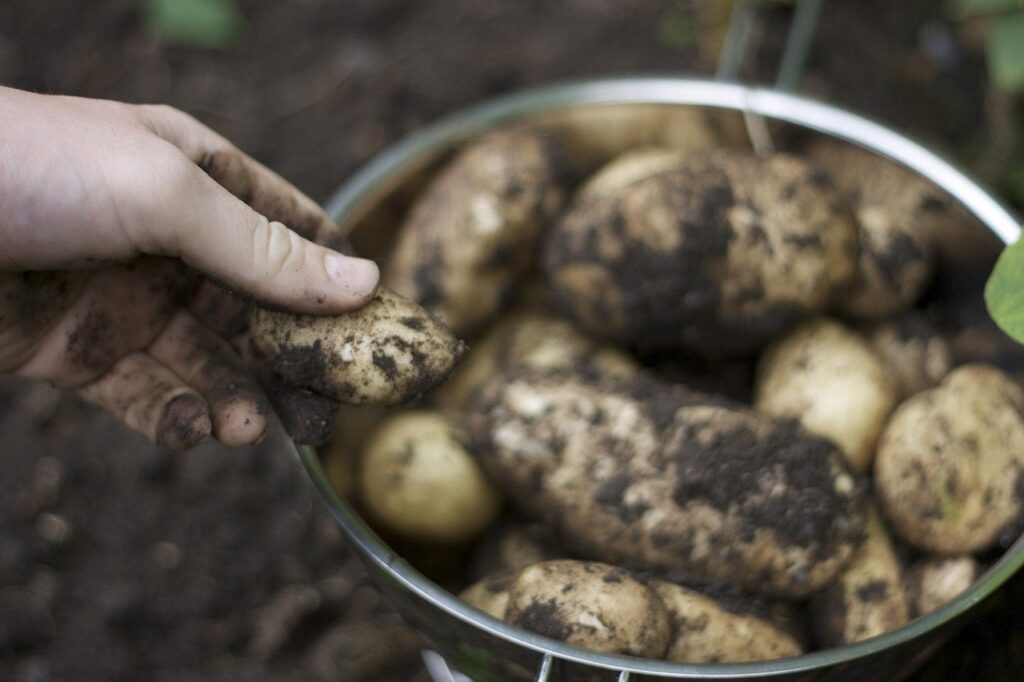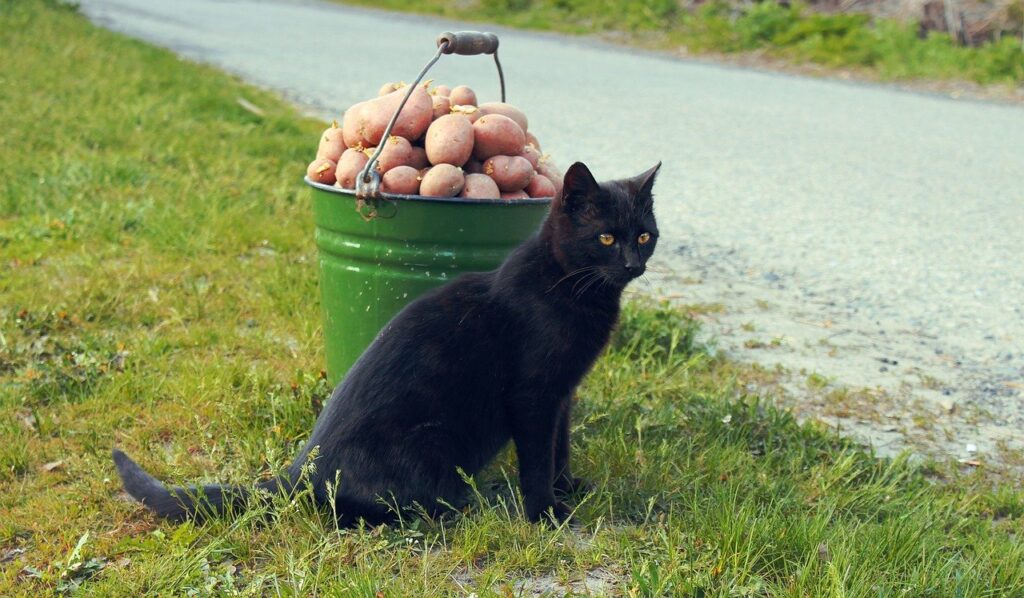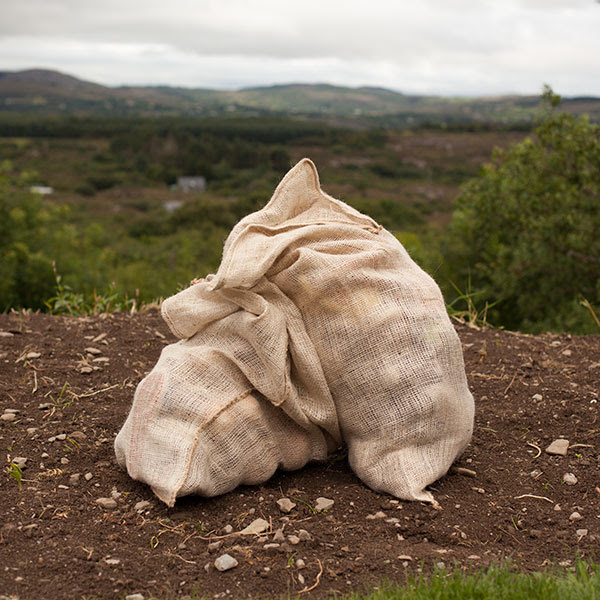We use cookies to make your experience better. To comply with the new e-Privacy directive, we need to ask for your consent to set the cookies. Learn more.
Harvesting & Storing Maincrop Potatoes

Potatoes are one of those staples that can keep us fed all year round Ireland. Maincrop potatoes are used for stashing away and eating through Winter and Spring when little else is available in the garden. These potatoes generally produce thicker skins and have longer dormancy periods which inhibits them from sprouting too soon. However, to keep your maincrop potatoes in good shape for a long storage it is also important to store them well.
In-Situ
Tubers, being underground plant organs, are most at home in the soil where conditions are dark, moist and cool (but not too cold). So, the easiest tactic for storing potatoes is to leave them put when they've finished growing. You know your potatoes are ready when the tops have died back naturally in the case of early maturing varieties, or if they have succumbed to blight and you have had to remove the foliage. Maincrop blight resistant potatoes may keep growing on late into the season so you can remove the tops if the tubers are getting too big.
When left in the ground for a couple of weeks the potatoes will ‘cure’. This is when the skins mature and toughen, making them less prone to damage when harvesting and disease in storage. They can then be left alone and harvested as needed. Be careful if you have a light soil as heavy rain can wash it back into the furrows leaving potatoes exposed to sunlight. Potatoes exposed to sunlight will start to produce chlorophyll and turn green. As part of the same process they also produce solanine, a toxin that is harmful to humans, which makes them inedible. If you have extra soil you can pull it up over the drills to cover the spuds deeper. You can also cover them with ground cover and this will keep the weeds down.
If you are brave and lucky this method can keep you harvesting potatoes from the ground well into the following Spring. However, you run the risk of losing them to wet conditions, frost damage and vermin. It is safer to lift them in September-November before conditions get wet. You can also move the potatoes earlier to plant a winter green manure and build fertility for the following year's crop.
Potato Clamp
A traditional way to store potato crops and insulate them from the elements was to make a 'potato clamp'. This is when you gather your potatoes into one place and cover with straw and soil to protect from frost and wet conditons. This method can also be used to store other root vegetables such as carrots and turnips. To build a clamp:
- Choose an area where water doesn’t sit.
- Place a layer of straw on the ground.
- Stack your potatoes into a pile on the straw.
- Cover them with ~20cm of straw.
- Cover this layer of straw with a layer of soil. An extra bit of straw should be left sticking out the top to allow the pile to vent.
- A trench can be dug around the pile to act as a drain and provide more soil for covering the mound.
- Making your clamp in a prism shape, like a big spud toblerone, allows you to take your potatoes from one end as needed without disturbing the rest of the stored crop.
- Employ a cat to keep vermin away from your stash!

Storing Potatoes Inside
It's usually more convienient to store your potatoes inside safe from rodents, waterlogging and frost. The most important thing to remember is to harvest in dry conditions. Harvesting potatoes when they’re wet will greatly increase the chance of them rotting in storage. Sort out any potatoes which are damaged or show signs of disease or spots and eat these first.

When thinking about storage, try to mimic the conditions in the soil: darkness, 5-10°C temperature and a bit of ventilation. Not the conditions you normally want in your cosy home. Fridges are too cold as the low temperature will cause a change of starches to sugars in the stored potatoes. Known as ‘sweetening’ this can lead to the potatoes becoming dark when cooked. An unheated room such as a garage or rodent proof shed seems like the best bet. For containing the potatoes, something that allows some air movement is preferable – crates, hessian bags, or laundry baskets are ideal.

